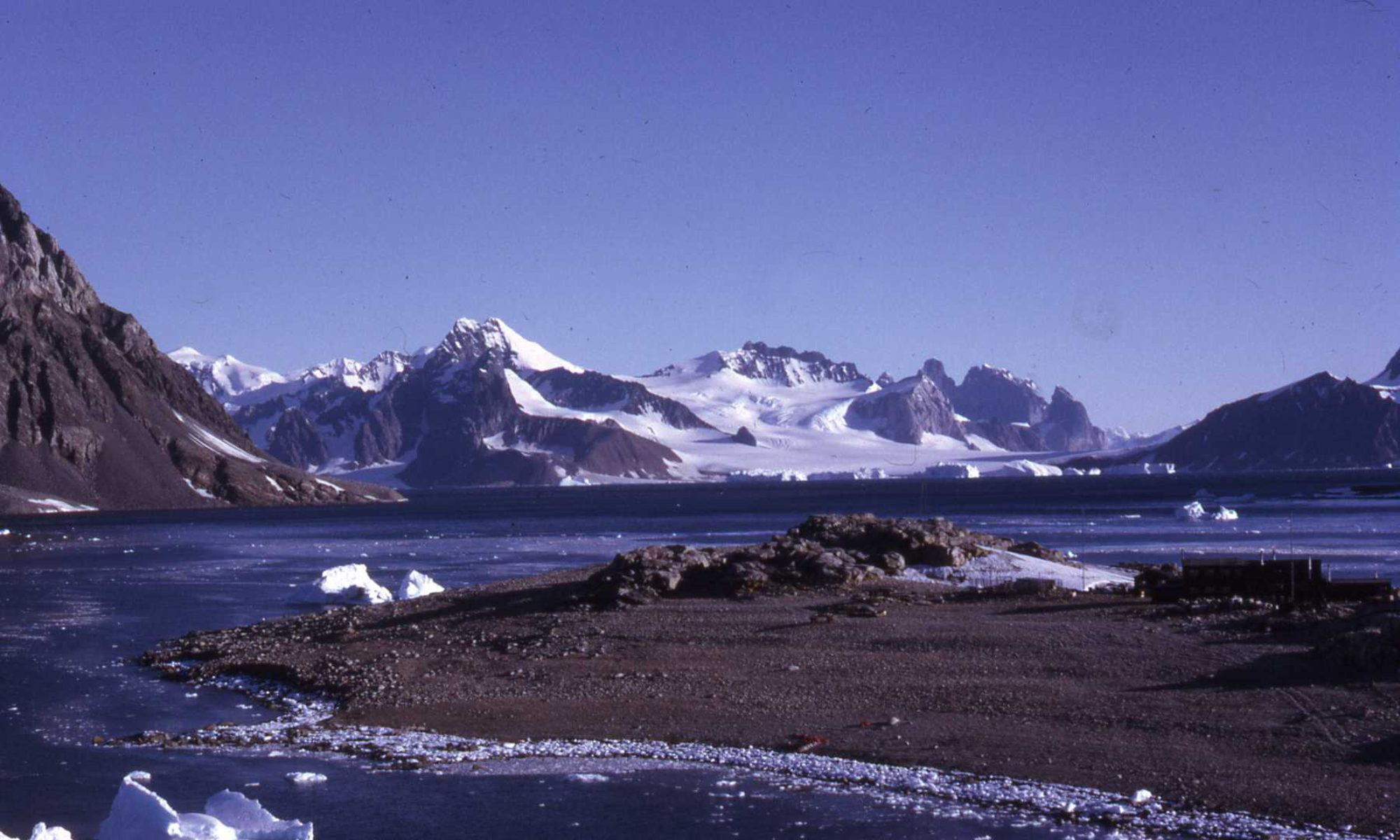Marguerite Bay and Stonington Island – History – Jonathan Walton (continued)
The expedition spent 2 winters in Antarctica. The first was in the Argentine Islands, further North on the West coast of the Peninsula. When they realised it was impractical to dismantle this hut and re-erect it for their second winter they quietly nipped up to the abandoned whaling station in Deception Island and “borrowed” some timber that had been left in neat piles on the foreshore. They then sailed South and built the base for their second winter in Marguerite Bay – on the Debenham Islands, about 5 miles North of Stonington Island.
From there they carried out various detailed scientific studies as well as 2 exploratory sledging trips much further South. One of these (Stephenson, Fleming, Bertram) crossed Marguerite Bay and discovered King George VI Ice shelf, separating Alexander Island from the Peninsula mainland. They reached around 72.5S latitude and on the return journey Northwards landed and camped on the Eastern Shore of Alexander Island at 71.19S, 68.16W where they found an abundance of fossils – the first in the Southern part of the peninsula. Their camp was nestled below a steep scree slope so they decided to name the place “Fossil Bluff”.
The second Journey (Rymill, Bingham) sledged South and East over the spine of the Peninsula and they proved incontrovertibly that the peninsula was definitely part of Antarctica’s mainland, not a series of islands.
BGLE is little known outside the circles of Polar enthusiasts. It was essentially a group of gentlemen, mostly with strong links to Cambridge University and many who had spent extended periods of time together in East Greenland under “Gino” Watkins in the early 1930’s. The whole 30 month expedition cost around £50,000 which included the purchase of the “Penola”, a 3 masted Breton schooner. Minimal government grants and the ship was manned by 2 trained ship’s officers , an engineer and a seaman, aided and abetted by members of the expedition. The engine proved to be very unreliable so they sailed most of the way South. It was not a “heroic expedition” – they lived in basic but perfectly comfortable conditions, achieved remarkable scientific and exploratory results during their 2 year stay, then sailed home again. No heroics, no epic takes of hardships – just a job well done. Which is partly why it never made the headlines as there had been no disasters!
While they discovered the small Islands, later named the Debenham Islands, where they built their base it had the major disadvantage that it was not connected to the mainland so until the sea ice formed there was no way of exploring further. That had to wait until the USA established East Base in 1939 on Stonington Island (which at that time was not an island but connected directly to the mainland via a steep ice ramp). After the war years, when the British came South again as Operation Tabarin, hoping to take advantage of the Debenham Islands hut, it had been removed and replaced by an Argentinian one which has been occupied for most of the time ever since – “San Martin” base.
A side story from BGLE concerned my father, Kevin Walton (Stonington 1946, 47) whose tutor at University was Alfred Stephenson, senior surveyor for BGLE. Dad also got to know well Launcelot Fleming, geologist and Chaplain to the expedition, as well as most of the other expedition members through his continued involvement with Antarctic matters and regular meetings of The Antarctic Club. Dad was asked to address the US Antarctic club in the 1980’s (I think !) and couldn’t decide what to talk about. He didn’t want to get drawn into the “Finn Ronne Appreciation Society” which he was definitely not a member of. So he decided to talk about BGLE, not their considerable achievements, but the participants themselves. Many of them later became very eminent in multiple fields, not just Antarctic ones.
He duly put his talk together and he and my mum set off for Heathrow to fly to Washington. At Heathrow Dad was politely told that he would be unable to fly as his passport was out of date! In his haste he had picked up the wrong passport. The US Antarctic Club dinner was due to take place that same evening. My mother duly departed while Dad drove straight back to the Malverns, collected his current passport and caught a flight the next day – but missed the dinner! (my mum had been the guest of honour in Dad’s place). Sadly there is no transcript of the address he had written – but it would have been fascinating to have learnt more about the members of this remarkable group.
Jonathan Walton (Glaciologist, Fossil Bluff – 1974, 1975)
